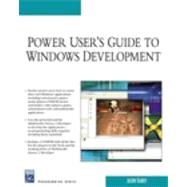
| Windows Development Why Make Programs? Program Types Screen Savers Edutainment Interactive Tutorials Games CDROM Menus Applications Software Tools Used Multimedia Fusion 2 Developer Chapter Summary | |
| Introduction to Developer Product Range MMF vs MMF Developer Requirements Installation Requirements Runtime Requirements Installing Developer Chapter Summary | |
| Getting to Know Developer Program Creation Process in Developer Graphics & Design Objects Coding Program Walkthrough Editors The Editors Storyboard Editor Frame Editor Event Editor Event List Editor Picture Editor Expression Evaluator Properties Toolbars Chapter Summary | |
| Our first program Setting up our screen Writing our Code Playback | |
| Graphics and Animation Graphic Creation Importing Graphics Drawing Graphics in MMF2 Animations Image Objects Draw Object Picture Object Quick Backdrop Active Picture Active Backdrop Chapter Summary | |
| Movement Movement Basics Applying Movement Chapter Summary | |
| Sound and Music Using sound in your programs Adding Sound Adding Music Programming sound events Chapter Summary | |
| Video Using Video Video Objects within MMF2 FLI Direct Show MCI AVI MPEG Quicktime Video Object Settings Inserting Video | |
| Windows Control Windows Standard Objects Buttons and Check boxes List Boxes Tool Bars Spin Object Combo Box Tree Control List View Datagrid Active System Box Background System Box Dialogue Object | |
| Cursors Using Cursors Cursor Object Make Different Cursors | |
| Text Fonts and Text Placement Text Objects RTF Edit Box String Text Manipulation | |
| Networking & Operating Systems Networking Operating Systems Moo FTP - File Transfer Protocol | |
| Time and Date Timing Events The Clock and Countdown | |
| Data Access About Databases Database Objects INI Arrays ODBC PART 2 : Practical Projects | |
| Creating Screensavers What are Screensavers? Screensaver Types Pictures Movement Interactive Informative Windows Control Panel Creating a basic Screen saver Creating a preview screen Image Gallery saver Interactive Screensaver (using desktop background) Chapter Summary | |
| Creating Interactive Menus When are they used? Types Game/Program Loaders CDROM Navigation Installer Screen Menu Creation Example Using Autorun Chapter Summary | |
| Interactive Tutorial Why Tutorials User Training Introduction to Product or Services Education Zoo Tutorial Project Graphics and Objects Zoo - Initial Set-up Creating the Frames Changing the Application Settings Zoo - Main Menu Zoo - Main Screens Zoo - Video Chapter Summary | |
| Creating a Game Why Make Games Game Types Side Scrolling Platform Bat and Ball Card or Puzzle About the Game Graphics Library - The Game The Game - Initial Set-up Creating the Frames Changing Application Settings The Game - Main Menu The Game - The Game Screen The Game - Hi-Scores The Game - Programming Programming The Main Menu Programming The Game Programming The Hi-Scores Chapter Summary | |
| Creating an Application Different Types of Application Window Types Full Screen Shaped Application Window MDI Functionality Task Bars Pop-up Menus Menus Icons Enabling and Disabling Windows Options Chapter Summary | |
| Education Program Education Types Education Example Chapter Summary | |
| Video Player Introduction Initial Set-up Programming Chapter Summary | |
| Music Player Introduction Initial Set-up Programming Chapter Summary | |
| Getting Help MMF2 Help Help Files Help About Tutorial Examples Auto Update Backing up Files Useful Websites Other Sites Chapter | |
| Summary | |
| About the CDROM | |
| Appendix | |
| Table of Contents provided by Publisher. All Rights Reserved. |
The New copy of this book will include any supplemental materials advertised. Please check the title of the book to determine if it should include any access cards, study guides, lab manuals, CDs, etc.
The Used, Rental and eBook copies of this book are not guaranteed to include any supplemental materials. Typically, only the book itself is included. This is true even if the title states it includes any access cards, study guides, lab manuals, CDs, etc.